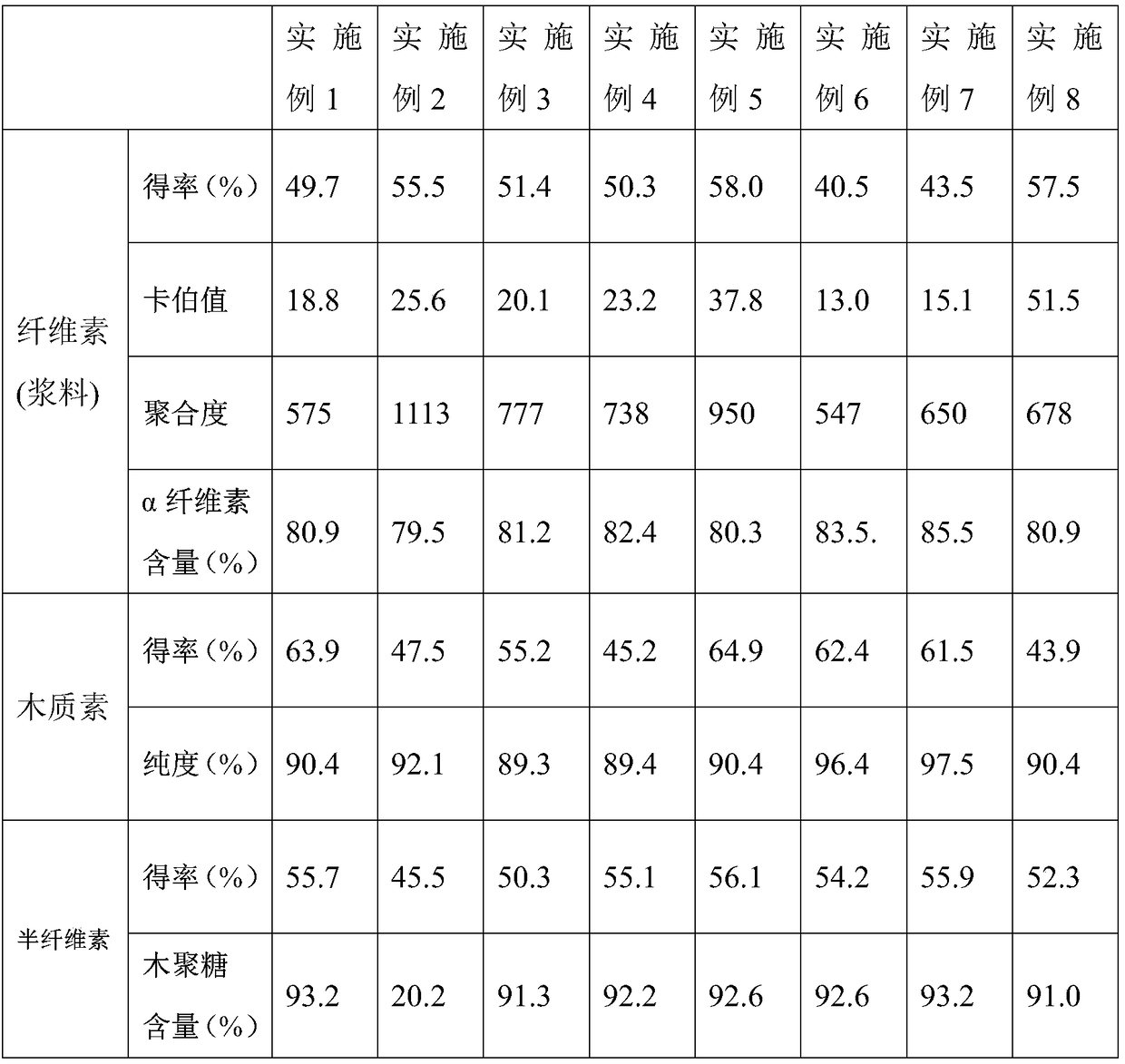Method for separating three components of cellulose, hemicellulose and lignin in plant fiber raw materials
A technology of hemicellulose and plant fiber, which is applied in fiber raw material processing, textiles and papermaking, etc., can solve the problems of serious pollution of water resources and atmospheric environment, and achieve excellent performance, efficient separation and resource utilization, and low production energy consumption Effect
- Summary
- Abstract
- Description
- Claims
- Application Information
AI Technical Summary
Problems solved by technology
Method used
Image
Examples
Embodiment 1
[0023] A method for separating three components of cellulose, hemicellulose and lignin in a plant fiber raw material, the specific steps are as follows:
[0024] 1) Lactic acid / choline chloride deep eutectic solvent configuration
[0025] Mix lactic acid and choline chloride evenly, stir at 60°C for 1 hour, and configure a lactic acid / choline chloride deep eutectic solvent with a molar ratio of 9:1.
[0026] 2) Plant fiber raw materials are heated and cooked in a deep eutectic solvent
[0027] Long 2 ~ 4cm, wide 1 ~ 2cm poplar chips are placed in the air for 2 days, measure the moisture, take by weight 50g dry poplar chips and join in the pressurized reaction kettle, and add the 250g prepared by step 1) with a molar ratio of 9: 1 lactic acid / choline chloride deep eutectic solvent, so that the solid-liquid ratio of the plant fiber raw material and the deep eutectic solvent is 1:5, and then heat and cook. The conditions of the heating and cooking treatment are as follows: the ...
Embodiment 2
[0035] The separation of cellulose, hemicellulose and lignin three components in the plant fiber raw material is the same as in Example 1, wherein, in step 2), the plant fiber raw material sample is 2-4 cm long and 1-2 cm wide. Masson pine wood chips of ~4cm and 1~2cm in width, moso bamboo chips of 2~4cm in length and 1~2cm in width, poplar wood powder of 20 mesh to 80 mesh, masson pine wood powder of 20 mesh to 80 mesh, moso bamboo powder of 20 mesh to 80 mesh, Either straw with a length of 2 to 4 cm or wheat straw with a length of 2 to 4 cm can be used instead.
Embodiment 3
[0037] The separation of cellulose, hemicellulose and lignin three components in the plant fiber raw material, method is the same as embodiment 1, wherein, in step 2), the lactic acid / choline chloride deep eutectic solvent that molar ratio is 9:1 adopts The molar ratio is either 5:1, 7:1, 11:1 lactic acid / choline chloride.
PUM
| Property | Measurement | Unit |
|---|---|---|
| size | aaaaa | aaaaa |
| degree of polymerization | aaaaa | aaaaa |
Abstract
Description
Claims
Application Information
 Login to View More
Login to View More - R&D
- Intellectual Property
- Life Sciences
- Materials
- Tech Scout
- Unparalleled Data Quality
- Higher Quality Content
- 60% Fewer Hallucinations
Browse by: Latest US Patents, China's latest patents, Technical Efficacy Thesaurus, Application Domain, Technology Topic, Popular Technical Reports.
© 2025 PatSnap. All rights reserved.Legal|Privacy policy|Modern Slavery Act Transparency Statement|Sitemap|About US| Contact US: help@patsnap.com

